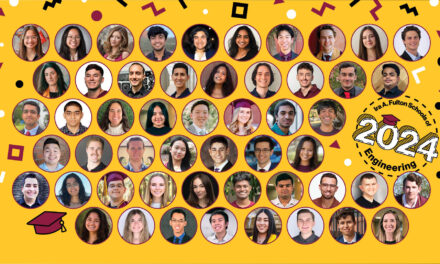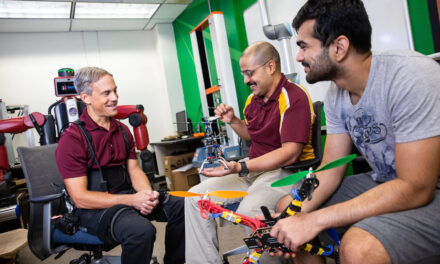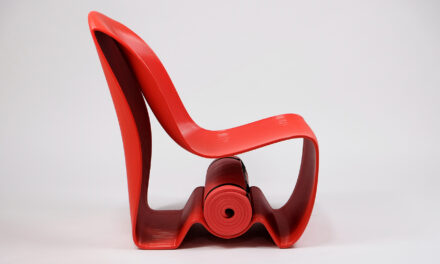
New SUEDE shoes apply smart tech to ankle injury prevention

Ankle sprains are one of the most common musculoskeletal injuries, usually involving a stretched or torn ligament in the joint. A simple misstep leading to a sprain can significantly impact physical activity and quality of life.
Prevention and recovery of ankle sprains usually involve external passive supports, such as tape and braces. But these solutions can cause problems.
Long-term use of passive methods can weaken the supporting muscles and soft tissue around the joint, making a person reliant on their perpetual use. While restricting the motion of the joint can prevent future sprains, it also causes the ankle to be less able to deal with disturbances such as uneven terrain without added support and negatively alters the natural function of the foot and leg.
A team of researchers from Arizona State University is creating an active, automated ankle support system to overcome the limitations of current treatment methods.
The Smart User-Effective Data-Enabled, or SUEDE, Shoe is a wearable smart shoe system that actively supports the ankle without hindering natural motion. Its soft brace can adjust the stiffness of the support to assist the user as needed, rather than the less-helpful constant support tapes and traditional braces offer.
“Wearable devices can provide continuous support to the human user during daily activities,” says Hyunglae Lee, an associate professor of mechanical and aerospace engineering in the Ira A. Fulton Schools of Engineering at ASU who is leading the team developing the SUEDE Shoe. “With recent advances in sensor and actuator technologies and control and machine learning algorithms, we also expect the wearable device will be smarter, smaller and more comfortable.”
It will also provide users with real-time, cumulative injury risk assessment and help them to follow clinical treatment guidelines through an intuitive smartphone-based user interface.
The project — supported by a $1.074 million National Institutes of Health R01 research grant — is a collaboration between the Fulton Schools, the Herberger Institute for Design and the Arts and the College of Health Solutions at ASU that will also involve orthopedic medicine and physical therapy consultation by the CORE Institute and Rise Orthopedic and Sports Physical Therapy.
“The active smart shoe system requires a tight integration of innovations in sensor data processing, smart actuation, biomechanical modeling, injury prediction and closed-loop control, and extensive user experience study and clinical integration study, which cannot be achieved without an interdisciplinary team of engineers, behavioral science researchers and clinicians,” Lee says.
Lee is in charge of the biomechanical modeling of ankle mechanics and developing the soft active ankle brace. This project builds upon his previous and ongoing research on ankle studies and soft wearable robotics.
“Our lab, the Neuromuscular Control and Human Robotics Laboratory, has developed a patented novel robotic platform to characterize ankle mechanics and ankle stability during functional tasks, including dynamic walking,” says Lee, who is a faculty member in the School for Engineering of Matter, Transport and Energy, one of the seven Fulton Schools. “We have also developed a soft robotic ankle device and evaluated its effectiveness over the rigid counterpart.”
Sze Zheng Yong, an assistant professor of mechanical and aerospace engineering in the School for Engineering of Matter, Transport and Energy, is developing the prediction and control algorithms to provide active assist-as-needed ankle support. He brings expertise in control and estimation theory with an emphasis on safety, which is a primary concern for an automated wearable device.
Pavan Turaga is a professor in the School of Electrical, Computer and Energy Engineering, another of the seven Fulton Schools, and director of the School of Arts, Media and Engineering, a transdisciplinary digital media program in collaboration with the Herberger Institute for Design and the Arts and the Fulton Schools. Turaga brings expertise in machine learning and modeling complex dynamical phenomena for the sensor data processing and activity recognition aspects of the SUEDE Shoe.
“Ankle biomechanics is a prime example of a complex dynamical system, where many important parameters are not directly observed,” Turaga says. “Machine-learning-based approaches can help bridge those gaps.”
Matthew Buman, a professor and director of vision and strategic solutions in the College of Health Solutions, is interested in researching how sleep, sedentary behavior and activity can be harnessed to promote health. He is designing and implementing the intuitive user interface and evaluating its usability to support the smart shoe system.
The ASU team is taking an innovative approach to designing the system, with advanced use of sensors, control theory, machine learning and clinical practice.
“These areas have not been brought together for ankle biomechanics with this degree of precision and coherence before,” Turaga says.
Throughout the four-year project, the team will develop the SUEDE Shoe system, which involves the soft brace and additional data modeling and algorithms. The researchers will quantify and model the movement of healthy ankles and those at risk of injury, and integrate an algorithm for injury prediction and an algorithm to determine when the ankle needs active support to prevent strains.
The team will continually refine the algorithms and user interface during the project, and evaluate and validate the smart shoe system with the help of clinical partners.
Orthopedic surgeon Ryan Scott from the CORE Institute and physical therapist Mark Jagodzinski from Rise Orthopedic and Sports Physical Therapy provide extensive experience in ankle rehabilitation. They will work with the ASU team to design treatment protocols and plans, assess performance measures and evaluate the efficacy of the SUEDE Shoe approach in a patient group.
The SUEDE Shoe will be beneficial to clinicians because it will help them better understand the mechanics of the foot and ankle and how they correlate to ankle injury risk during a variety of physical activities. They will also be better able to help their patients through timely and effective feedback about the patient’s practice of injury-prevention strategies.
The team is enthusiastic about the potential to improve lives through this innovative solution.
“Human movement and biomechanics are very complex phenomena, a deeper understanding of which can directly impact human health and simultaneously makes for high stakes as well as high impact,” Turaga says. “I find the potential for impact the most exciting aspect.”


































